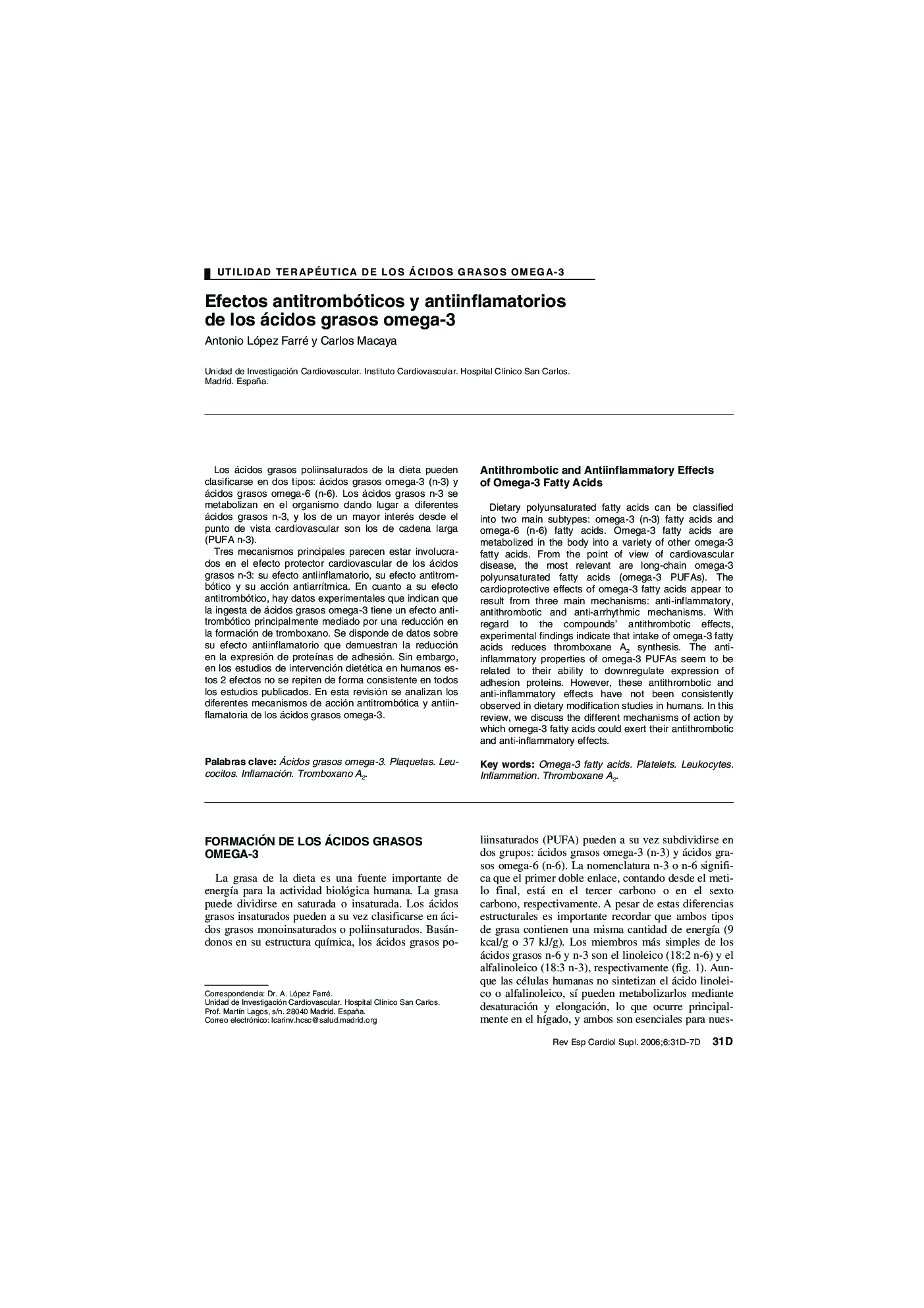| Article ID | Journal | Published Year | Pages | File Type |
|---|---|---|---|---|
| 3019754 | Revista Española de Cardiología Suplementos | 2006 | 7 Pages |
Abstract
Dietary polyunsaturated fatty acids can be classified into two main subtypes: omega-3 (n-3) fatty acids and omega-6 (n-6) fatty acids. Omega-3 fatty acids are metabolized in the body into a variety of other omega-3 fatty acids. From the point of view of cardiovascular disease, the most relevant are long-chain omega-3 polyunsaturated fatty acids (omega-3 PUFAs). The cardioprotective effects of omega-3 fatty acids appear to result from three main mechanisms: anti-inflammatory, antithrombotic and anti-arrhythmic mechanisms. With regard to the compounds' antithrombotic effects, experimental findings indicate that intake of omega-3 fatty acids reduces thromboxane A2 synthesis. The antiinflammatory properties of omega-3 PUFAs seem to be related to their ability to downregulate expression of adhesion proteins. However, these antithrombotic and anti-inflammatory effects have not been consistently observed in dietary modification studies in humans. In this review, we discuss the different mechanisms of action by which omega-3 fatty acids could exert their antithrombotic and anti-inflammatory effects.
Keywords
Related Topics
Health Sciences
Medicine and Dentistry
Cardiology and Cardiovascular Medicine
Authors
Antonio López Farré, Carlos Macaya,
